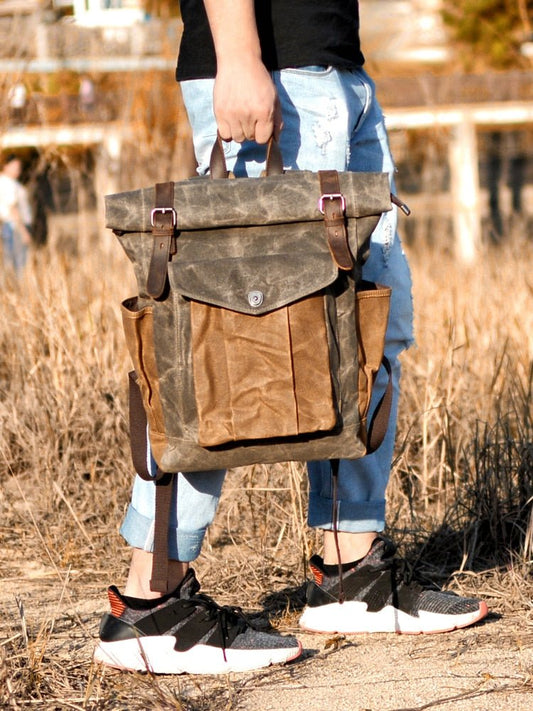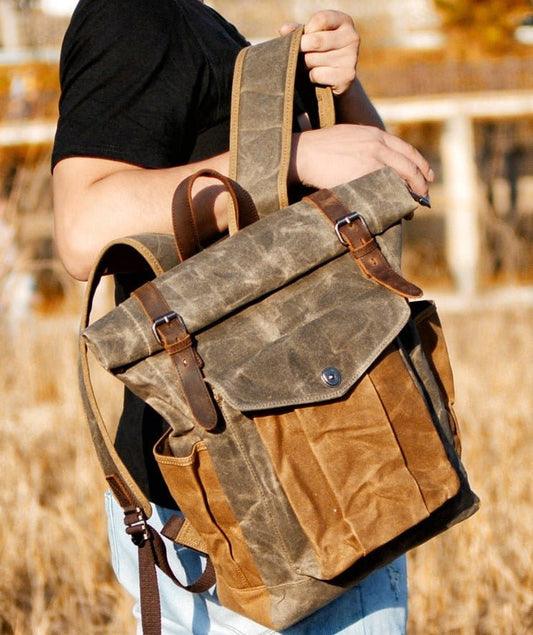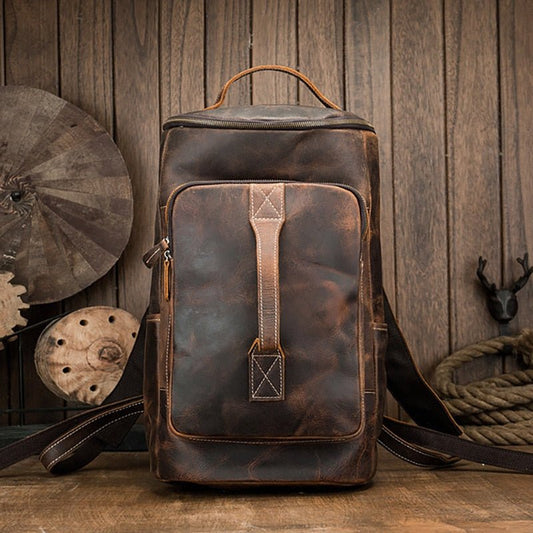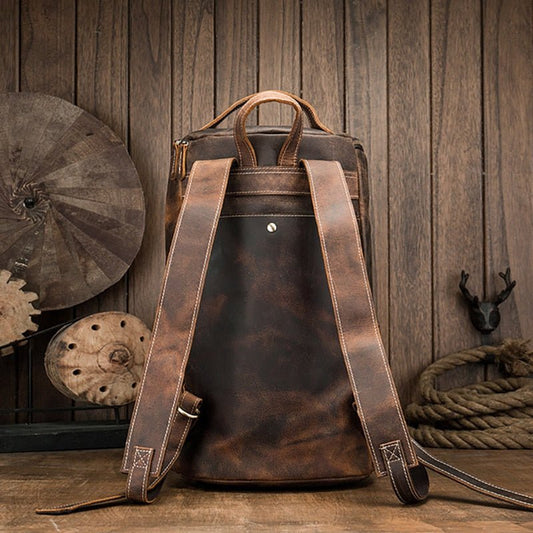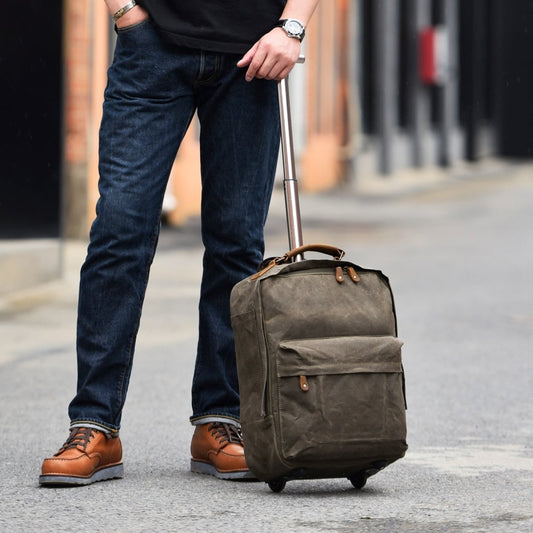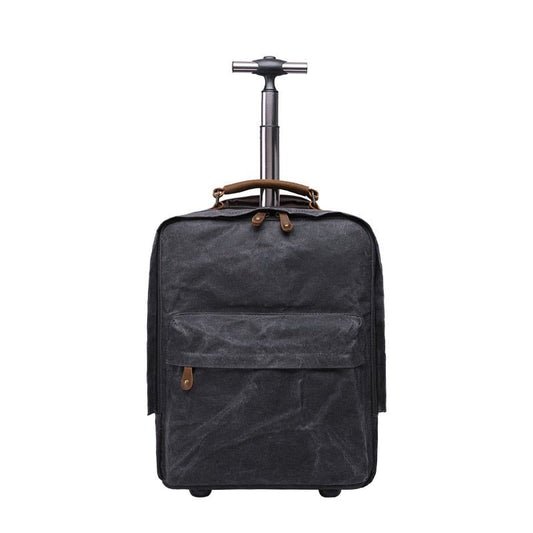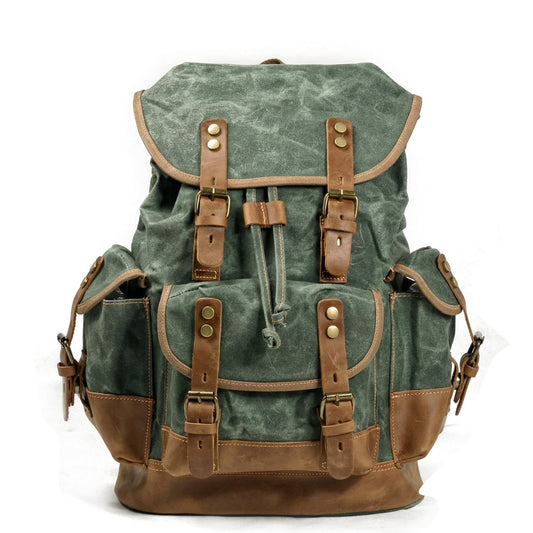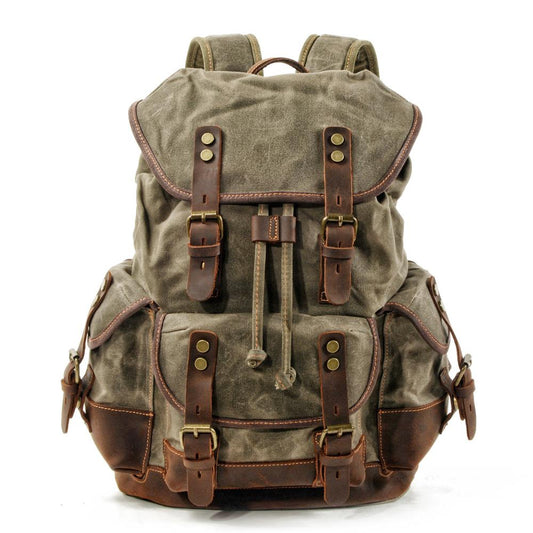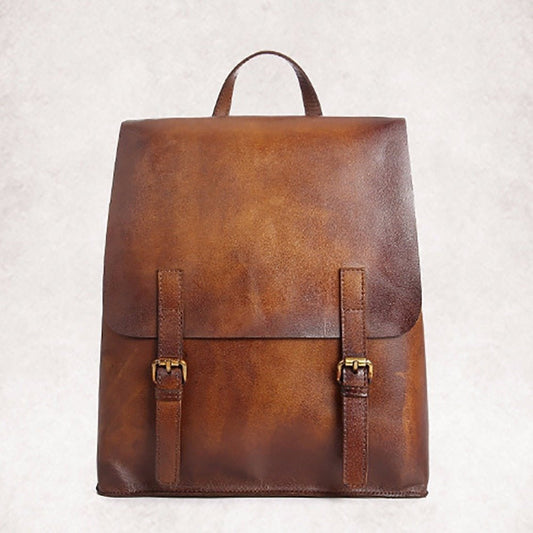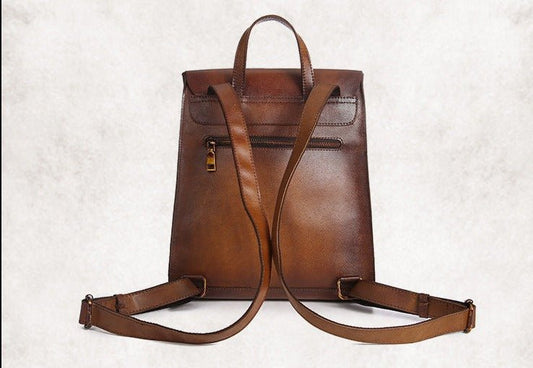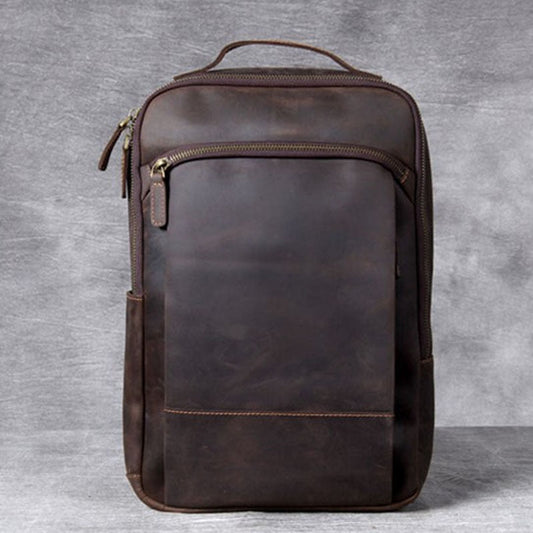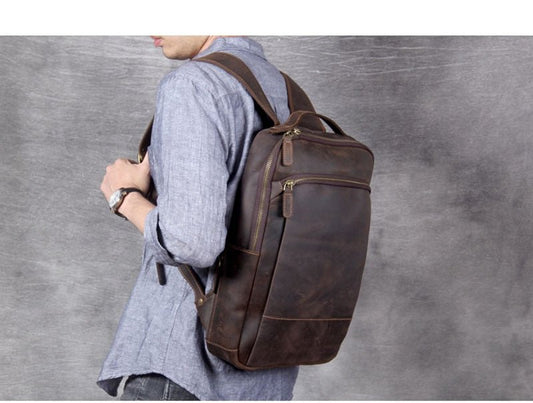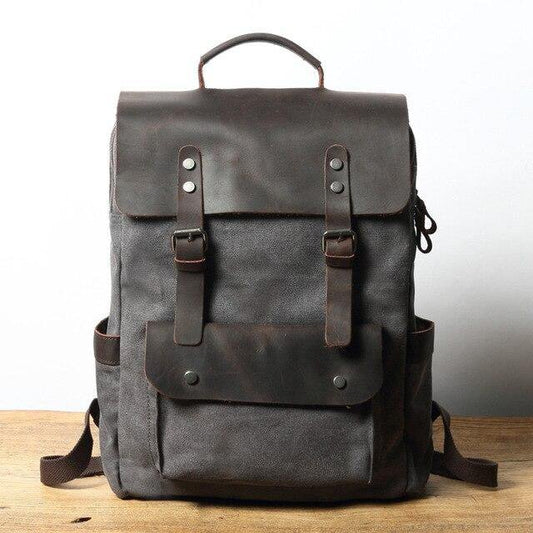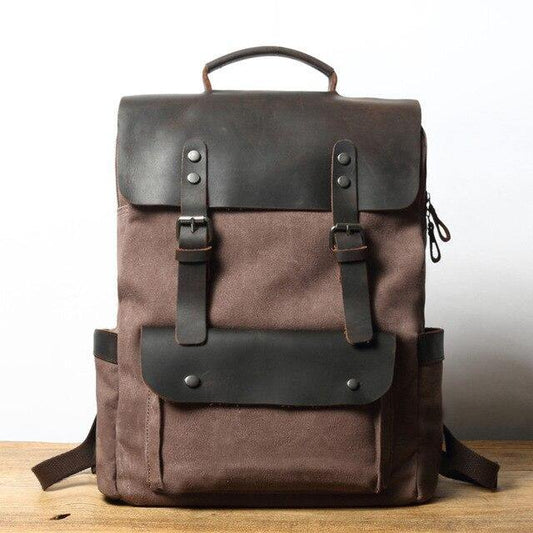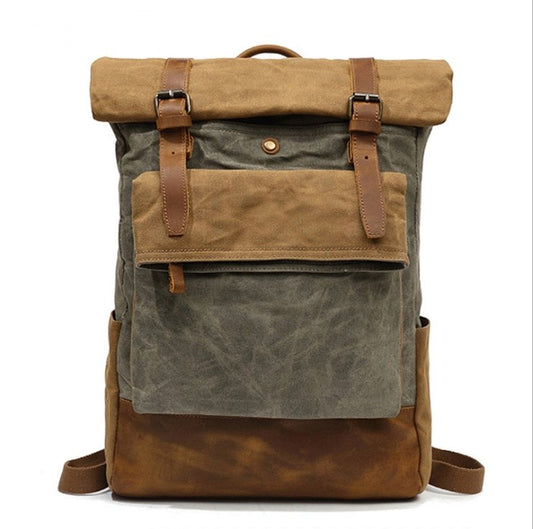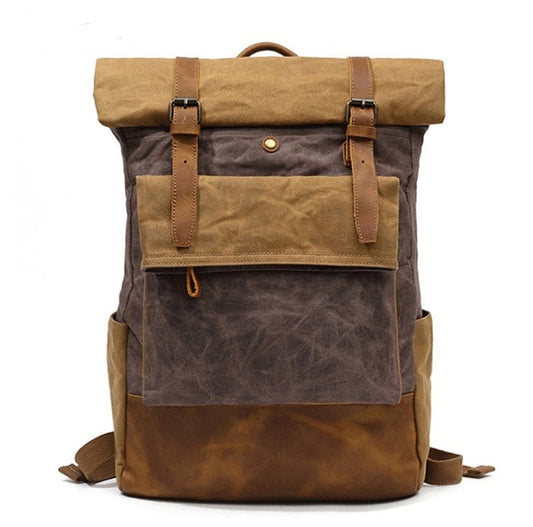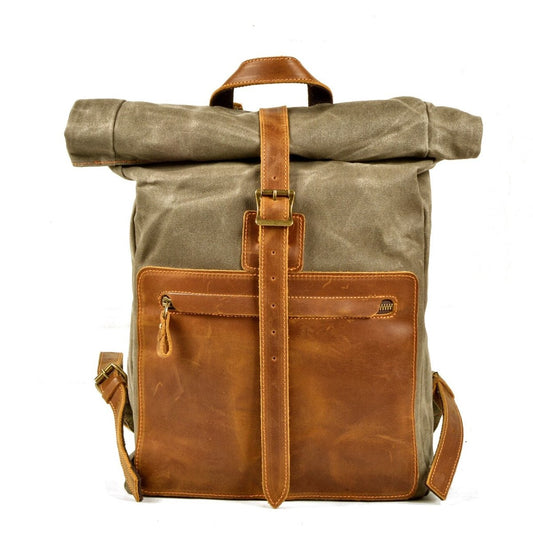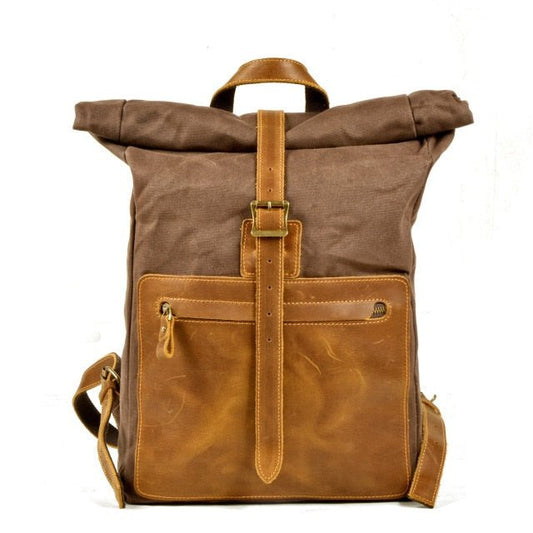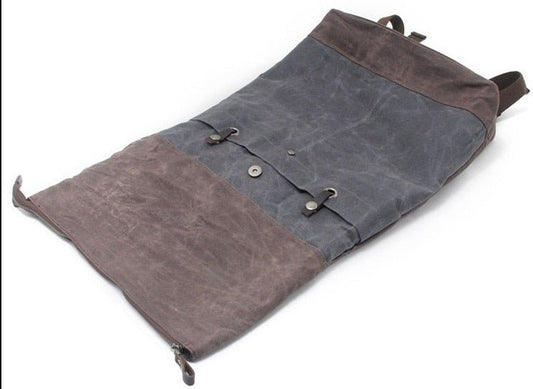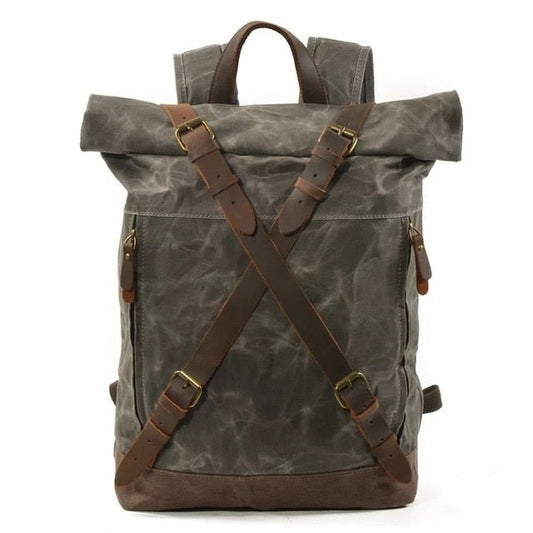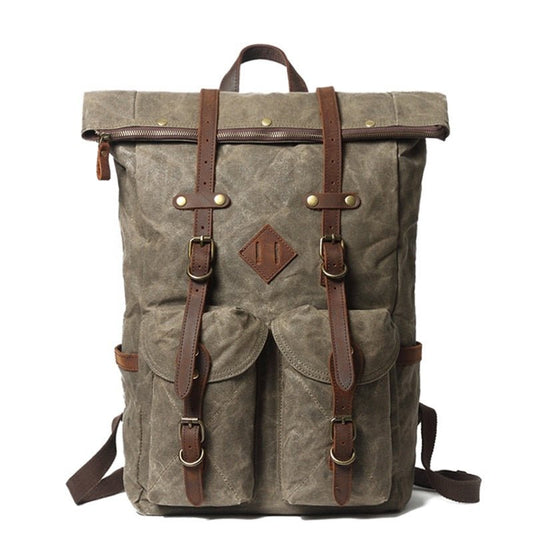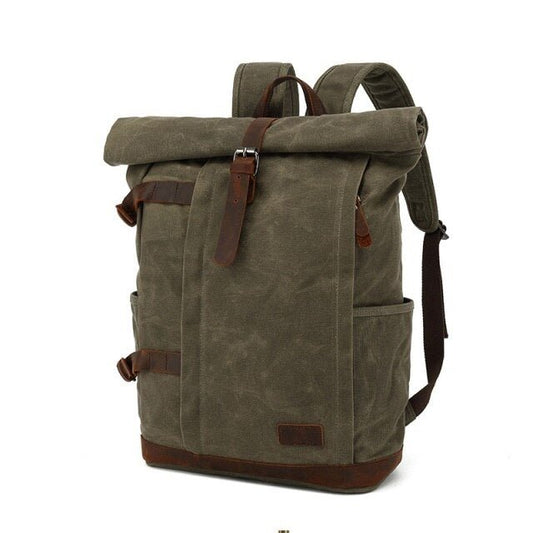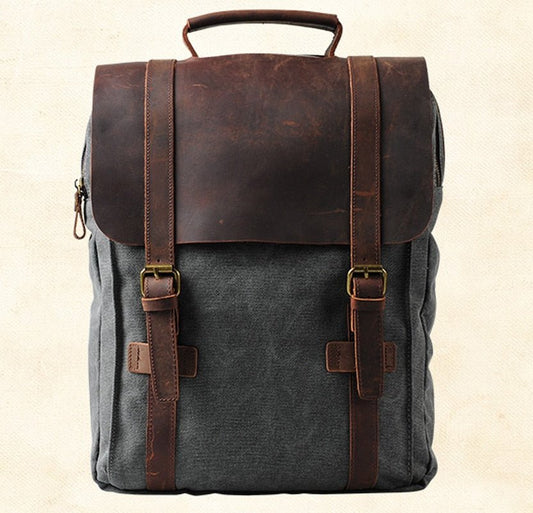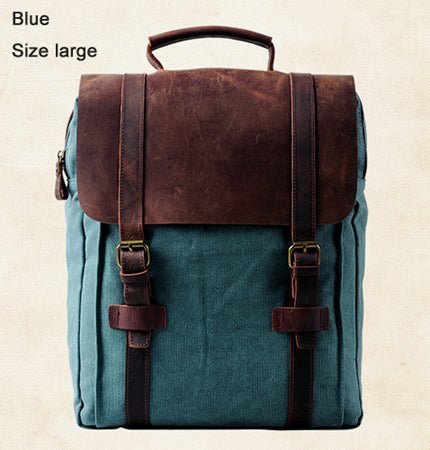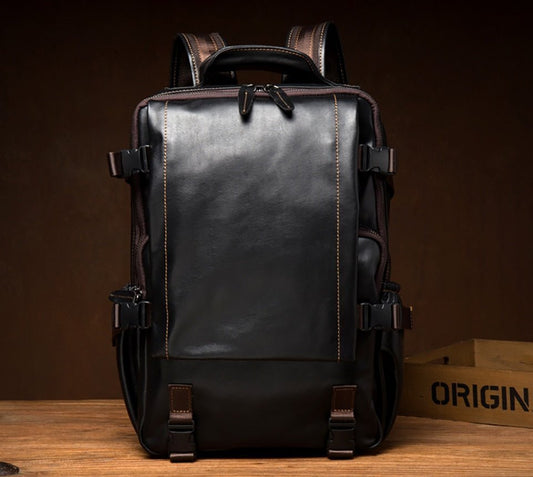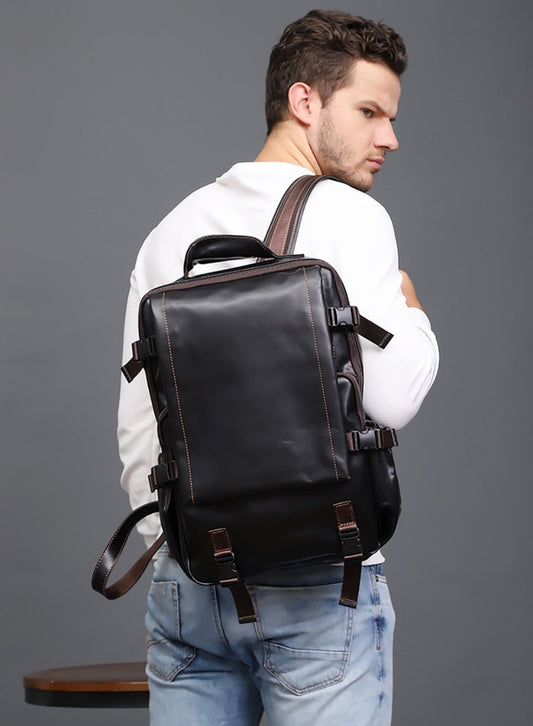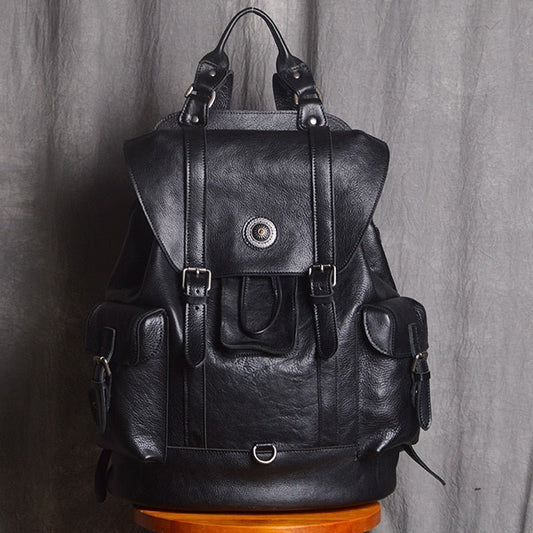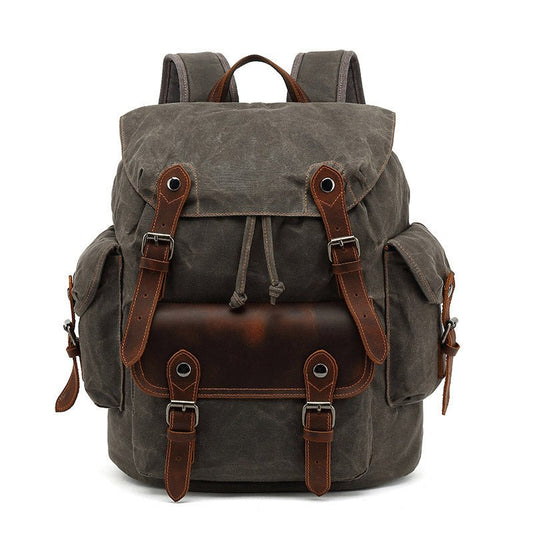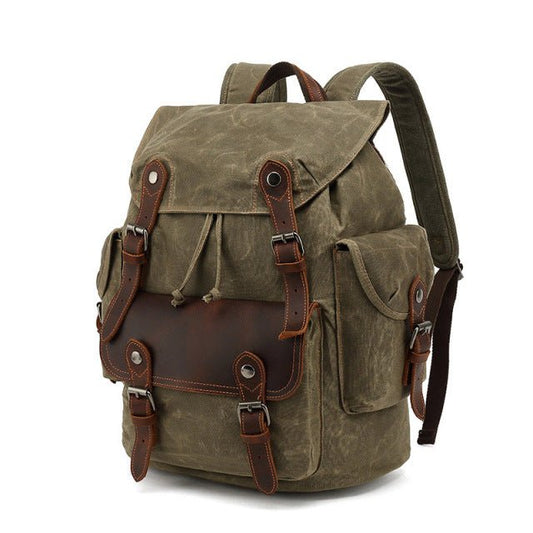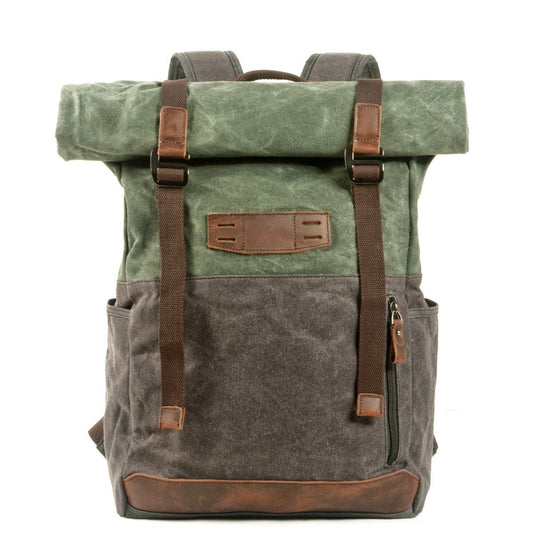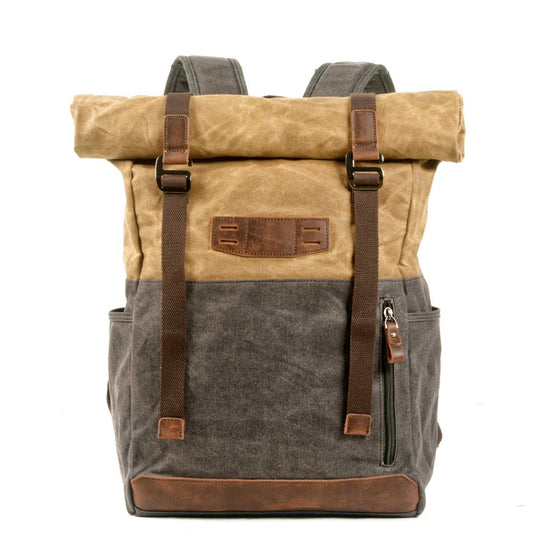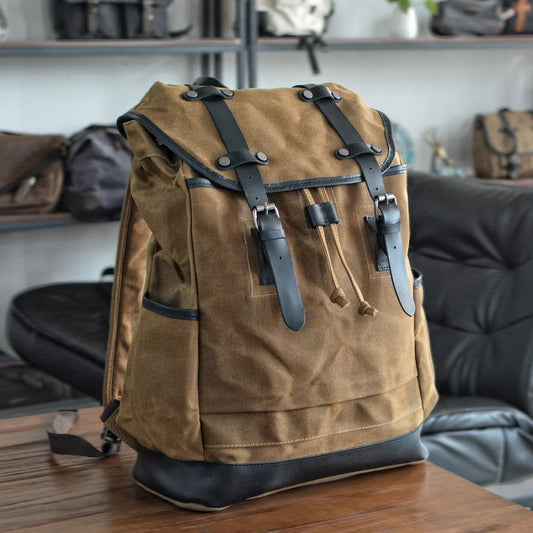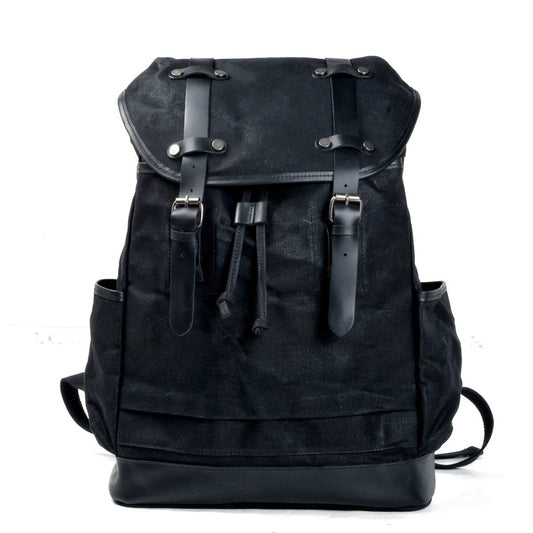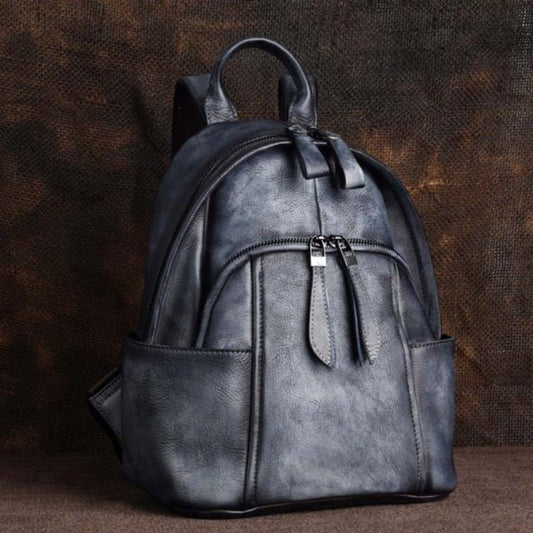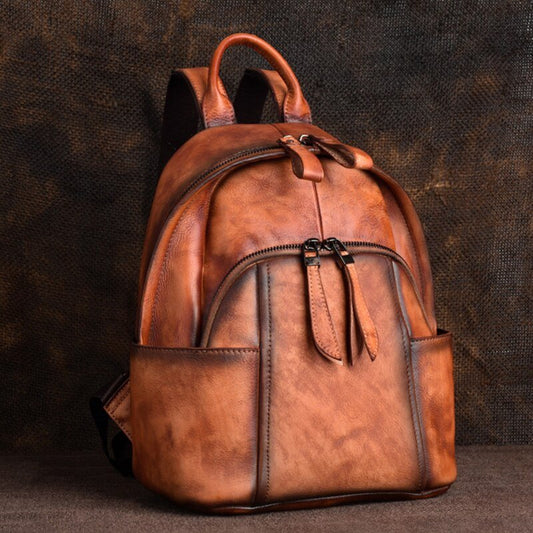
10 helpful tips on how to take good care of your leather
Leather goods do not necessarily require extensive, regular care to ensure their longevity, but they do need regular inspection to age well, retain their beauty over time and withstand everyday use. These are some important points to consider before purchasing a backpack.
With regular care, your bag or backpack can last for several years. Two to three times a year is usually sufficient.
This care also benefits the threads of the seams, which must be constantly protected with a greasy film so that they do not dry out and deteriorate.
Here you will find some tips and practical information about caring for the leather in our bags, backpacks or handbags, so that you can enjoy your purchase for a long time.
-
Leather is a naturally durable and resilient material
Leather is a naturally durable material and is also very well prepared through the various stages of tanning and finishing.
The skins of leather goods are nowadays treated by the t-shirt maker for everyday use without any limitation. It is therefore, in principle, ready to face everyday life without the need to take any special precautions, other than those that common sense recommends.
A bag is not as exposed as shoes, for example. However, dust, temperature differences and humidity can affect the flexibility and appearance of the material, depending on lifestyle.
-
Leather care is easy and needs to stay on occasion
The best advice we can give you to take care of your leather bag (except suede and velvet) is to feed it with a liquid and oily solution to preserve its mechanical properties and prevent it from cracking over time or becomes stiff.
It is also the first protection against certain stains. To this end:
- Massage the leather regularly and without pressure with a soft cotton cloth (or your fingertips) soaked in a soft, moisturizing milk.
- Gently wipe the leather with a soft, dry and clean cotton cloth to remove excess grease (if necessary). This helps remove surface dust and maintain the skin's suppleness by nourishing it.
The ideal frequency is once a month, but generally twice a year is sufficient. This product is not very greasy, but it is sufficient for routine care.
It is important to carefully remove the excess fat as it is not conducive to the leather.
From time to time during the year, for a more intensive care, you can also use a more oily care cream that is commonly used for leather shoes, colorless or tinted as needed.
Avoid wax and grease: their dense texture is difficult to spread, can lead to an undesirable overthickness of the individual reliefs and clog the pores of the leather, affecting its "breathable" quality.
These products do not nourish the leather but create a screen that is insufficient and does not meet the needs of the skin. We give at the end of the article some products and brands of creams for leather.
-
The leather of new bags can be unstable in the first few days.
However, beware of certain models whose leather could rub off on clothing with repeated rubbing, or conversely, jeans that rub off on the pocket. Sometimes leather bags are not well stabilized and are therefore sensitive.
A good test is to wipe the new leather with slightly absorbent paper; the result will speak for itself. If you have any doubts or notice any dye residue on the paper, do not hesitate: an application of moisturizing milk can remove the unstable layer.
If the problem persists, a simple waterproofing spray can save you from a lot of inconvenience! It must be repeated regularly to achieve a lasting effect.
However, turned-down hides and velvets do require special care (see below).
-
Avoid causes of premature wear
If the bag is used in normal conditions, that is, without frequent exposure to sunlight, moisture, dust or excess fat, two operations per year are enough to protect it from external aggressions.
Similarly, protecting the bag from repeated rubbing against walls, walls, floors and other surfaces protects the leather and stitching from rapid wear and tear that would lead to renovation.
Finally, overloading a satchel, especially school satchels and city bags, is one of the most common causes of accelerated wear and tear that can be avoided with a little common sense.
-
Regular leather care will improve the look of your bag
However, if you are concerned that you will not be able to avoid these causes of wear and tear, and if you want to give your leather a beautiful shine and an incomparable softness while protecting it preventively, you should regularly (once a month) use a moisturizing milk (as for human skin) or, if you prefer, apply a specific product for liquid and greasy leather with a dry and soft cloth. This regular maintenance will only improve the condition and appearance of your bag while protecting it.
You can also apply a waterproofing spray to oily leather or suede if you're concerned the bag might stain your clothes or vice versa. This should be done immediately after purchase and repeated regularly.
Finally, some special products in the form of balm or cream can also recolor the skin of your bag while taking care of it.
This comes in handy if you wish or find it necessary after a treatment that would have changed the final color.
At the bottom of the page is our guide to specialty brands that you can find online or at a major hardware store around town.
-
There are different types of stain removal for leather bags
An oily film or waterproofing spray on leather is a good preventive measure because:
- It limits the extreme penetration of stains into the pores of the skin,
- It prevents the pigments of the leather on a garment from fading.
The subsequent care is therefore a good method to avoid stubborn stains. Do not use cleaning products that contain detergents.
The first advice for stains is to intervene immediately before the leather penetrates. This greatly facilitates the result.
To clean a light stain, use a cloth soaked in a highly diluted soap solution based on liquid Marseille soap or leather soap and work locally.
Apply the soapy solution in a circular motion, using a soft brush for the most heavily grained leathers.
Once the stain is gone, dry it off and then immediately apply a moisturizing cream or milk.
Use these products in very small amounts and always diluted, preferably with a cotton swab. Apply carefully so as not to damage the surface. All these products are easily available in classic stores or hardware stores.
Stains on leather: causes and remedies
- Oil painting: Therebentine oil
- Water-based painting: soapy water.
- Fats: petroleum jelly and talc (one at a time)
- Tar, gasoline: glycerin.
- Molds: essence of terebinth.
- Resin, grass: alcohol at 90°.
- Essence: Hot vinegar combined with soapy water.
- Humidity: petroleum jelly.
- Rust: lemon + table salt + washing powder (rub the mixture lightly).
- Carbon Black, Mechanical Oil: Talc (powder for absorption).
- Red or white wine, lemonade, sparkling wine, tea, coffee: 90° alcohol.
- Fruit: Alcohol that needs to be burned.
- Fat content: Terre de Sommières (powder and leave to soak). Turpentine (stamp with a cotton swab)
- Chewing gum: Harden the dough with ice, then dab it with a sponge soaked in hot vinegar.
- Chocolate: Burning alcohol diluted with warm water.
- Milk, sauce: ammonia diluted with 15%.
-
Cleaning a stain on a leather bag requires finesse and speed
Since leather and its surface are delicate, it is advisable to apply these products carefully and with moderation, to dilute or dose them moderately (10 to 15% + warm water), to test on a discrete area, for a precise effect, use a cotton swab use, always wipe the treated surface with a soft, damp cloth and then possibly apply a wax or cream to refresh the color and condition the skin (except suede).
Intervene quickly before a stain penetrates the leather. If necessary, apply a color refresher or leather wax after such a procedure to refresh the color (available in shoe shops or DIY/drugstores).
-
Soften and refresh over-stiff, new or old leather
There is an excellent natural remedy for leather that is a little too tight, either because it is new and unworn, or because it is old and dry; the softener with beef foot oil (e.g. Saphir brand) is a greasy and liquid solution that is applied to the leather bag (or shoes) with a brush.
After a 24-hour rest and drying period, the skin, richly nourished, regains a beautiful suppleness and its former shine for antique leathers.
-
Special leather materials require special care
Suede, nubuck and other velvety leathers are specially cared for with brushes, rubber and special or suitable products.
Note that talc, baking soda, or terre de sommières brushed gently is a good (and inexpensive) way to remove an oily stain on suede and suede.
Nubuck leather is less sensitive to stains and marks than velvety leather such as suede or suede. However, it can benefit from the same recommendations.
To clean an ink stain on this type of leather, soak a cotton swab in 70% alcohol and blot the stain; wipe it with a soft, damp cloth.
If a garment on the bag is faded, wipe the stain with a cotton ball soaked in make-up remover milk with 70° alcohol and rub gently, renewing the soiled cotton balls and then rubbing dry. White vinegar in small doses is also a good stain remover.
To restore a velvety look, brush with a suede brush or very fine sandpaper. Nubuck can also be waxed to obtain a satin finish.
-
Contact a qualified leather specialist
Don't forget that your local shoemaker is a true craftsman and experienced leather professional who can advise you and intervene in the necessary repairs of your bag.
His training and experience will be very useful to you, so that your leather bag will accompany you for several years. trust him! trust him!
Patient and careful, they always find (good!) solutions for the various repairs to leather bags and are sometimes true artists...
Danger! When it comes to a bag, there is not only leather to look after. The zippers also need to be oiled regularly so that they do not oxidize, but also slide easily and permanently. Paraffin is a good lubricant, as is soap.
If you like leather goods and you liked our article, visit our collection of high quality leather bags, made only with high quality leather! We also have canvas backpacks if you like the combination of these two noble materials.
-
More tips.
2. If there are stains, scrub them out with a little washing-up liquid and water
3. Rinse the backpack until the soap is completely removed
4. Allow to dry for at least 24 hours before wearing or storing in an airtight plastic bag
5. When cleaning your leather shoes, first wipe with a damp cloth to remove surface dirt and then allow to dry completely before buffing with shoe polish or saddle soap (if available).
6. Always remember that these products darken the color of your leather goods. So if you want to keep their original color, you should only use water or a mild detergent when they are wet
7a. Use white vinegar instead of bleach to whiten for light-colored bags only
8a. For stubborn stains such as B. Red wine, try rubbing alcohol and baking soda on a clean rag and rub gently over the stain until it's gone
8b. If you're looking for other ways to care for your bag and want a product that you'd love to take care of, check out

